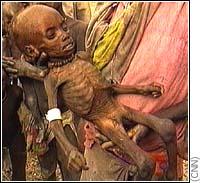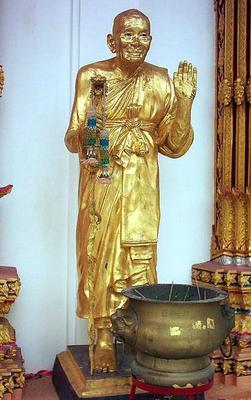
The Avatamsaka Sutra says:
"Such as the True Thusness, Which stays with its original nature, Remaining unchanging throughout."On 12.08.05 - 14.08.05 I made a pilgrimage trip to Had Yai, Songkhla Province in Southern Thailand. At one of the popular temples near Had Yai (Wat Pagor), I saw for myself the legendary body of Luangpor (Ajarn) Tong, whose physical body shows no sign of decay after passing away since the year 2000, at the age of 93.
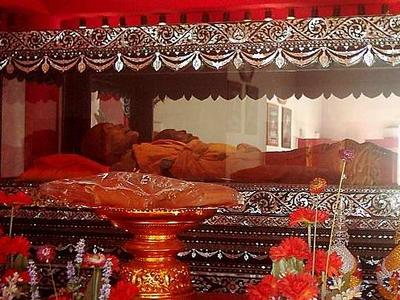
LP Tong looks as if he was sleeping, and other than the sunken facial features, one really cannot tell he has died for 5 years. According to the temple, his hair continues to grow and needs trimming every once in a while. This kind of phenomena is called "Flesh Body Buddha" in Buddhist terminology.

Only monks of high spiritual attainment can choose to keep their bodies in samadhi after they enter final nibbana. This is usually to serve a special purpose, because the normal tradition is to be cremated (like the Buddha) and the remaining relics be placed in a stupa or pagoda. Reports say that indeed there is such a special purpose in the case of LP Tong. Before he passed away, he had already left instructions for his disciples not to cremate his body. LP Tong wanted future generations of Buddhists from the whole region to gain confidence in the Triple Gems after seeing the miraculous aspects of the Dhamma through his undecaying body.

This alternative tradition is perhaps started by Maha Kassapa, the Buddha's foremost disciple who was also not cremated. According to the scriptures, Maha Kassapa flew inside Mount Kukkutapada (Chicken Foot Peak) and entered final nibbana there. His body will remain in eternal samadhi until the future Buddha Maitreya descends to Earth to teach the Dhamma many thousands of years later.
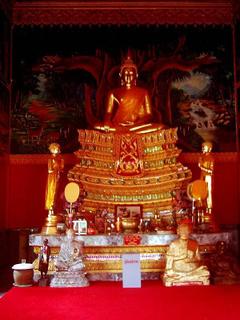
Coming back to the subject, LP Tong predicted that this small temple would become quite propserous with the bus loads of followers & tourists coming to see him after his death. Today, these words are proven right - Wat Pagor is thriving with pilgrims from Singapore, Malaysia & Thailand, who come daily to pay respects to him and ask for various blessings.
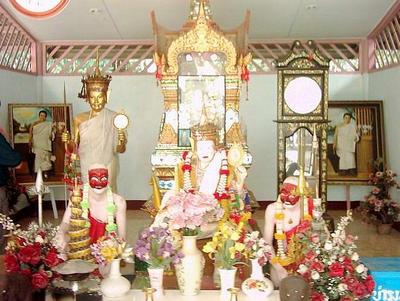
Besides LP Tong's undecaying body, I also got to see Maechee (Nun) Niam's skeletal remains. MC Niam was LP Tong's female teacher who had died decades ago. Out of respect for his teacher, LP Tong kept her body in a glass chedi to be venerated by himself and his followers. As I walked closer to take a look, I saw a dried yellowish skeleton in a seated position and garbed in the white robes of a non-ordained nun. Like the other countries of Theravada culture, Thailand does not have an order of Bhikkuni. Nuns could only take the 10 percepts and wear white robes instead of the saffron robes of the Sangha.
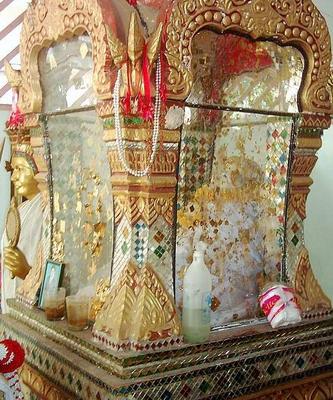
Irregardless, MC Niam was known to be a compassionate Nun who observed vegetarianism throughout her holy life, although it was not required of monks & nuns in the Theravada tradition.

She is said to be able to grant the wishes of the faithful who pray to her, but they must also develope compassion and abstain from eating meat for a period of time. Paying respects to both LP Tong & MC Niam, one could not help but be filled with a profound sense of bliss. One regret I had was that I did not manage to meet LP Tong's successor, Abbot Maha Pairon when I went there; but rest assured I will be back for a future visit the next time.
 Reflecting on the undecaying bodies I've seen, I had an insight that although our physical body go through birth and death, happiness and suffering, sin and merit; our Buddha nature remains unmoving amidst all these. Everything we know, feel, experience, possess are ultimately unreal and does not belong to us.
Reflecting on the undecaying bodies I've seen, I had an insight that although our physical body go through birth and death, happiness and suffering, sin and merit; our Buddha nature remains unmoving amidst all these. Everything we know, feel, experience, possess are ultimately unreal and does not belong to us. 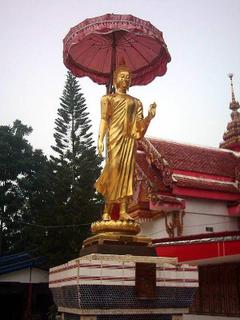 The Buddha is an illusionist turning an illusionary wheel of the Dhamma to teach illusionary sentient beings. If sentient beings attain any form of enlightenment, that is also unreal as there is nothing to realize and no suffering to end. What then is the absoulte truth, the true undecaying body which we cannot see? Meditate on this katha, especially the last verse, for the answer:
The Buddha is an illusionist turning an illusionary wheel of the Dhamma to teach illusionary sentient beings. If sentient beings attain any form of enlightenment, that is also unreal as there is nothing to realize and no suffering to end. What then is the absoulte truth, the true undecaying body which we cannot see? Meditate on this katha, especially the last verse, for the answer:
"Everynight I sleep with the Buddha, every morning it awakens with me. Whether sitting or standing it follows, whether speaking or silent it is there. Never leaving me for even an instant, it is no different from a shadow following the body. To know where this Buddha is, look right here in these words."
May you also see the true nature of your mind, sadhu.
 The Shin Min papers today (26.12.05) carried a report on a Singaporean man & his wife who met with a tour bus collision accident on Malaysia's North-South Highway. Apparently he was only slightly injured, as compared with his wife, who suffered broken cheekbones & teeth on impact. The man, Mr Zhang Yanguo, attributed his escape from serious injuries to a popular Thai Buddhist Amulet (called a Somdej) he was wearing. The amulet's casing was cracked by the impact, but Mr Zhang only got away with some minor bruises & abrasions to his knees. Other passengers were all injured to various degrees, and the female bus conductor was the one who got killed as she was sitting right in front.
The Shin Min papers today (26.12.05) carried a report on a Singaporean man & his wife who met with a tour bus collision accident on Malaysia's North-South Highway. Apparently he was only slightly injured, as compared with his wife, who suffered broken cheekbones & teeth on impact. The man, Mr Zhang Yanguo, attributed his escape from serious injuries to a popular Thai Buddhist Amulet (called a Somdej) he was wearing. The amulet's casing was cracked by the impact, but Mr Zhang only got away with some minor bruises & abrasions to his knees. Other passengers were all injured to various degrees, and the female bus conductor was the one who got killed as she was sitting right in front.


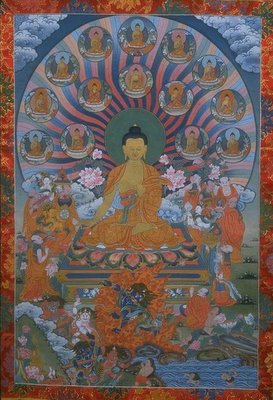

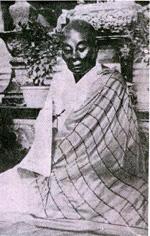
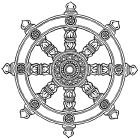
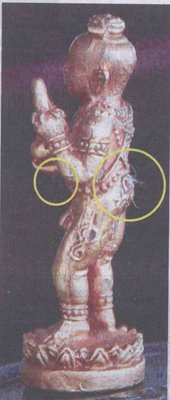

 As we all know, Wat Phakho is the temple where LP Tuad resided during his youth, before he travelled to Ayuthaya to further his Dhamma studies. This temple is located on the Phiphetasing Hill and therefore we need to climb up the hill to reach it. This long flight of steps are flanked by Nagas, which is a distinct feature of hilltop temples in Thailand.
As we all know, Wat Phakho is the temple where LP Tuad resided during his youth, before he travelled to Ayuthaya to further his Dhamma studies. This temple is located on the Phiphetasing Hill and therefore we need to climb up the hill to reach it. This long flight of steps are flanked by Nagas, which is a distinct feature of hilltop temples in Thailand. Near the entrance we are greeted by 2 statues of LP Tuad, in Samatid as well as Dhutanga postures. This temple was built many centuries ago (in 1514 AD) and houses many ancient objects & artifacts, many belonging to LP Tuad.
Near the entrance we are greeted by 2 statues of LP Tuad, in Samatid as well as Dhutanga postures. This temple was built many centuries ago (in 1514 AD) and houses many ancient objects & artifacts, many belonging to LP Tuad. The side hall is where the revered golden image of LP Tuad is kept, covered from head to toe with gold leaf. You can almost feel LP Tuad's presence here in the Sala.
The side hall is where the revered golden image of LP Tuad is kept, covered from head to toe with gold leaf. You can almost feel LP Tuad's presence here in the Sala. The main Chedi (Stupa) of the temple below is a well known symbol of Wat Phakho.
The main Chedi (Stupa) of the temple below is a well known symbol of Wat Phakho. 
 It was renovated in recent years and given a fresh coat of white paint. It is said to house the Buddha's Footprint; notice the mystical aura or glow surrounding the Chedi. This a definitely a place of great power.
It was renovated in recent years and given a fresh coat of white paint. It is said to house the Buddha's Footprint; notice the mystical aura or glow surrounding the Chedi. This a definitely a place of great power. A small Chedi below the main one caught my eye. In front of the Chedi is a statue of a young boy. Could this be a stupa of Kumantong or maybe just one of the young novices of this temple?
A small Chedi below the main one caught my eye. In front of the Chedi is a statue of a young boy. Could this be a stupa of Kumantong or maybe just one of the young novices of this temple?  A tall white Chedi behind the main one. This probably belongs to one of the past abbots.
A tall white Chedi behind the main one. This probably belongs to one of the past abbots.  The golden reclining Buddha (Phra Non) statue in the pavillion (Sala). He smiles radiantly towards all sentient being who come and worship at the temple.
The golden reclining Buddha (Phra Non) statue in the pavillion (Sala). He smiles radiantly towards all sentient being who come and worship at the temple.
 The main prayer hall (Bot) of the temple houses 3 southern styled Buddha statues as well as another seated image of LP Tuad. As we can see, there's an intricate web of white string below the roof, used for consecration of sacred amulets & images.
The main prayer hall (Bot) of the temple houses 3 southern styled Buddha statues as well as another seated image of LP Tuad. As we can see, there's an intricate web of white string below the roof, used for consecration of sacred amulets & images. One of my favorite Buddhas, Phra Sangajai or Maitreya (to the Chinese) located at the back of the temple, overlooking the South China Sea.
One of my favorite Buddhas, Phra Sangajai or Maitreya (to the Chinese) located at the back of the temple, overlooking the South China Sea. The old court house - Wat Phakho used to be the religious & political centre on this side of Songkhla, and therefore all legal matters were discussed here around 300 years ago. But it had long been converted into another Sala for people to worship.
The old court house - Wat Phakho used to be the religious & political centre on this side of Songkhla, and therefore all legal matters were discussed here around 300 years ago. But it had long been converted into another Sala for people to worship.  A life-sized wax image of LP Tuad, and yes, his magical crystal ball! According to the legend, this crystal ball is given to him by a python (probably a Naga) when he was a baby, and had followed LP Tuad ever since.
A life-sized wax image of LP Tuad, and yes, his magical crystal ball! According to the legend, this crystal ball is given to him by a python (probably a Naga) when he was a baby, and had followed LP Tuad ever since.  I could not go near it as the whole thing was protected by a glass chamber. However, as it was raining heavily at that time, I sat down and meditated outside the chamber in order to feel the energy radiating from the ball. It was a blissful experience! When the rain became lighter, I made my way down to hill and proceeded on my way back to Had Yai. This was without a doubt, one of my most memorable temple tours I took to Thailand. Hopefully I can also visit Wat Changhai (in Pattani), where LP Tuad attained enlightenment when it is safe from the terrorist threat. May the Dharmakaya of LP Tuad protect everyone, sadhu.
I could not go near it as the whole thing was protected by a glass chamber. However, as it was raining heavily at that time, I sat down and meditated outside the chamber in order to feel the energy radiating from the ball. It was a blissful experience! When the rain became lighter, I made my way down to hill and proceeded on my way back to Had Yai. This was without a doubt, one of my most memorable temple tours I took to Thailand. Hopefully I can also visit Wat Changhai (in Pattani), where LP Tuad attained enlightenment when it is safe from the terrorist threat. May the Dharmakaya of LP Tuad protect everyone, sadhu. 

 What is the karmic cause of such a disaster? None other than the 3 Poisons within one's mind. In the past, during the reign of Emperor Qianlong of the Qing Dynasty in China, there was a Runzhou district in the Jiangsu province. The inhabitants of that district were mostly fishermen who made a living catching fish, frogs & shells. They were used to daily killing and there was also a terrible tradition of disposing of female offspring by leaving them out in the open to die, or by drowning them. Everyday they caught fish & frogs and the elders would teach the children how to slaughter these creatures. This became their habit and these people thought it was great to know the art of slaughtering.
What is the karmic cause of such a disaster? None other than the 3 Poisons within one's mind. In the past, during the reign of Emperor Qianlong of the Qing Dynasty in China, there was a Runzhou district in the Jiangsu province. The inhabitants of that district were mostly fishermen who made a living catching fish, frogs & shells. They were used to daily killing and there was also a terrible tradition of disposing of female offspring by leaving them out in the open to die, or by drowning them. Everyday they caught fish & frogs and the elders would teach the children how to slaughter these creatures. This became their habit and these people thought it was great to know the art of slaughtering. 
 On the other hand her once divorced husband, who by nature likes to flirt around, is still sticking to his old habits and not giving her the attention that she deserves. Provoked into jealousy and anger, Hong decided to hire a young delinquent to beat up the object of her hatred - Xian-zai. As the previous attack did not cause serious injury to Xian-zai, the crime was not reported to the police. It only made the family more protective of Xian-zai. Unfortunately, that made Hong even more peeved. She felt she needed to make an even stronger statement to draw the attention of her nonchalant husband. Hong took out her savings and hired 2 thugs to teach Xian-zai a lesson he would never forget. Wielding cleavers that could easily inflict fatal injuries to any adult, let alone a young boy, the 2 thugs struck Xian-zai while he was returning home from school with his grandma.
On the other hand her once divorced husband, who by nature likes to flirt around, is still sticking to his old habits and not giving her the attention that she deserves. Provoked into jealousy and anger, Hong decided to hire a young delinquent to beat up the object of her hatred - Xian-zai. As the previous attack did not cause serious injury to Xian-zai, the crime was not reported to the police. It only made the family more protective of Xian-zai. Unfortunately, that made Hong even more peeved. She felt she needed to make an even stronger statement to draw the attention of her nonchalant husband. Hong took out her savings and hired 2 thugs to teach Xian-zai a lesson he would never forget. Wielding cleavers that could easily inflict fatal injuries to any adult, let alone a young boy, the 2 thugs struck Xian-zai while he was returning home from school with his grandma.  Now lying in hospital and slowly making a recovery, he could only listen in bewilderment as people tell him how his stepmom and all suspected accomplices got arrested by the police one-by-one. Xian-zai could not have imagined himself becoming the object of sympathy of the entire Hong Kong in a single day. Celebrity well-wishers have been visiting him in hospital and consoling the boy with all sorts of gifts. Child-cousellers have been appointed to relieve him of his traumatic experience. As for Hong, she would be charged with attempted murder, which warrants a life-sentence. Under a jury system swayed by public opinion, the HK courts would no doubt convict the young lady and all those men she hired to harm Xian-zai. These are the unwholesome fruits of her jealousy and anger. For her this mental prison transforms into a physical prison - proof of the Dhamma that one's enviroment is shaped by the state of one's mind. It is also important to note that this family tragedy is caused by Cen Weicheng's thoughts of lust (much like Ah How in Singapore), which often drove him to sexual misconduct.
Now lying in hospital and slowly making a recovery, he could only listen in bewilderment as people tell him how his stepmom and all suspected accomplices got arrested by the police one-by-one. Xian-zai could not have imagined himself becoming the object of sympathy of the entire Hong Kong in a single day. Celebrity well-wishers have been visiting him in hospital and consoling the boy with all sorts of gifts. Child-cousellers have been appointed to relieve him of his traumatic experience. As for Hong, she would be charged with attempted murder, which warrants a life-sentence. Under a jury system swayed by public opinion, the HK courts would no doubt convict the young lady and all those men she hired to harm Xian-zai. These are the unwholesome fruits of her jealousy and anger. For her this mental prison transforms into a physical prison - proof of the Dhamma that one's enviroment is shaped by the state of one's mind. It is also important to note that this family tragedy is caused by Cen Weicheng's thoughts of lust (much like Ah How in Singapore), which often drove him to sexual misconduct. 
 The Avatamsaka Sutra says:
The Avatamsaka Sutra says: LP Tong looks as if he was sleeping, and other than the sunken facial features, one really cannot tell he has died for 5 years. According to the temple, his hair continues to grow and needs trimming every once in a while. This kind of phenomena is called "Flesh Body Buddha" in Buddhist terminology.
LP Tong looks as if he was sleeping, and other than the sunken facial features, one really cannot tell he has died for 5 years. According to the temple, his hair continues to grow and needs trimming every once in a while. This kind of phenomena is called "Flesh Body Buddha" in Buddhist terminology.  Only monks of high spiritual attainment can choose to keep their bodies in samadhi after they enter final nibbana. This is usually to serve a special purpose, because the normal tradition is to be cremated (like the Buddha) and the remaining relics be placed in a stupa or pagoda. Reports say that indeed there is such a special purpose in the case of LP Tong. Before he passed away, he had already left instructions for his disciples not to cremate his body. LP Tong wanted future generations of Buddhists from the whole region to gain confidence in the Triple Gems after seeing the miraculous aspects of the Dhamma through his undecaying body.
Only monks of high spiritual attainment can choose to keep their bodies in samadhi after they enter final nibbana. This is usually to serve a special purpose, because the normal tradition is to be cremated (like the Buddha) and the remaining relics be placed in a stupa or pagoda. Reports say that indeed there is such a special purpose in the case of LP Tong. Before he passed away, he had already left instructions for his disciples not to cremate his body. LP Tong wanted future generations of Buddhists from the whole region to gain confidence in the Triple Gems after seeing the miraculous aspects of the Dhamma through his undecaying body.  This alternative tradition is perhaps started by Maha Kassapa, the Buddha's foremost disciple who was also not cremated. According to the scriptures, Maha Kassapa flew inside Mount Kukkutapada (Chicken Foot Peak) and entered final nibbana there. His body will remain in eternal samadhi until the future Buddha Maitreya descends to Earth to teach the Dhamma many thousands of years later.
This alternative tradition is perhaps started by Maha Kassapa, the Buddha's foremost disciple who was also not cremated. According to the scriptures, Maha Kassapa flew inside Mount Kukkutapada (Chicken Foot Peak) and entered final nibbana there. His body will remain in eternal samadhi until the future Buddha Maitreya descends to Earth to teach the Dhamma many thousands of years later.  Coming back to the subject, LP Tong predicted that this small temple would become quite propserous with the bus loads of followers & tourists coming to see him after his death. Today, these words are proven right - Wat Pagor is thriving with pilgrims from Singapore, Malaysia & Thailand, who come daily to pay respects to him and ask for various blessings.
Coming back to the subject, LP Tong predicted that this small temple would become quite propserous with the bus loads of followers & tourists coming to see him after his death. Today, these words are proven right - Wat Pagor is thriving with pilgrims from Singapore, Malaysia & Thailand, who come daily to pay respects to him and ask for various blessings. Besides LP Tong's undecaying body, I also got to see Maechee (Nun) Niam's skeletal remains. MC Niam was LP Tong's female teacher who had died decades ago. Out of respect for his teacher, LP Tong kept her body in a glass chedi to be venerated by himself and his followers. As I walked closer to take a look, I saw a dried yellowish skeleton in a seated position and garbed in the white robes of a non-ordained nun. Like the other countries of Theravada culture, Thailand does not have an order of Bhikkuni. Nuns could only take the 10 percepts and wear white robes instead of the saffron robes of the Sangha.
Besides LP Tong's undecaying body, I also got to see Maechee (Nun) Niam's skeletal remains. MC Niam was LP Tong's female teacher who had died decades ago. Out of respect for his teacher, LP Tong kept her body in a glass chedi to be venerated by himself and his followers. As I walked closer to take a look, I saw a dried yellowish skeleton in a seated position and garbed in the white robes of a non-ordained nun. Like the other countries of Theravada culture, Thailand does not have an order of Bhikkuni. Nuns could only take the 10 percepts and wear white robes instead of the saffron robes of the Sangha. Irregardless, MC Niam was known to be a compassionate Nun who observed vegetarianism throughout her holy life, although it was not required of monks & nuns in the Theravada tradition.
Irregardless, MC Niam was known to be a compassionate Nun who observed vegetarianism throughout her holy life, although it was not required of monks & nuns in the Theravada tradition.  She is said to be able to grant the wishes of the faithful who pray to her, but they must also develope compassion and abstain from eating meat for a period of time. Paying respects to both LP Tong & MC Niam, one could not help but be filled with a profound sense of bliss. One regret I had was that I did not manage to meet LP Tong's successor, Abbot Maha Pairon when I went there; but rest assured I will be back for a future visit the next time.
She is said to be able to grant the wishes of the faithful who pray to her, but they must also develope compassion and abstain from eating meat for a period of time. Paying respects to both LP Tong & MC Niam, one could not help but be filled with a profound sense of bliss. One regret I had was that I did not manage to meet LP Tong's successor, Abbot Maha Pairon when I went there; but rest assured I will be back for a future visit the next time.  Reflecting on the undecaying bodies I've seen, I had an insight that although our physical body go through birth and death, happiness and suffering, sin and merit; our Buddha nature remains unmoving amidst all these. Everything we know, feel, experience, possess are ultimately unreal and does not belong to us.
Reflecting on the undecaying bodies I've seen, I had an insight that although our physical body go through birth and death, happiness and suffering, sin and merit; our Buddha nature remains unmoving amidst all these. Everything we know, feel, experience, possess are ultimately unreal and does not belong to us.  The Buddha is an illusionist turning an illusionary wheel of the Dhamma to teach illusionary sentient beings. If sentient beings attain any form of enlightenment, that is also unreal as there is nothing to realize and no suffering to end. What then is the absoulte truth, the true undecaying body which we cannot see? Meditate on this katha, especially the last verse, for the answer:
The Buddha is an illusionist turning an illusionary wheel of the Dhamma to teach illusionary sentient beings. If sentient beings attain any form of enlightenment, that is also unreal as there is nothing to realize and no suffering to end. What then is the absoulte truth, the true undecaying body which we cannot see? Meditate on this katha, especially the last verse, for the answer:

 This festival has it origins in the Mahayana Buddhist legend that on the 15th day of the 7th lunar month, the Buddha's disciple Mogallana, at the advice of the Lord, made offerings to the whole Sangha community in order to relieve his mother from her suffering in hell. Because of this great merit Mogallana's mother was indeed released from hell and was reborn as a deva. The Buddha was very pleased with Mogallana's fillial piety and praised him extensively for it, thus starting the tradition of "Ullambana".
This festival has it origins in the Mahayana Buddhist legend that on the 15th day of the 7th lunar month, the Buddha's disciple Mogallana, at the advice of the Lord, made offerings to the whole Sangha community in order to relieve his mother from her suffering in hell. Because of this great merit Mogallana's mother was indeed released from hell and was reborn as a deva. The Buddha was very pleased with Mogallana's fillial piety and praised him extensively for it, thus starting the tradition of "Ullambana".  On this Ullambana day, future Buddhists would also make offerings to the Sangha for the benefit of their dead relatives. The Taoists, however, believe that on the 7th month the gates of the nether realm (including the ghost and hell realms - Taoists do not make a distinction) are opened for the ghosts to come up to the human world for a visit, and the humans, especially relatives, must make offerings to them to provide for their well being in the nether world, until they go back at the end of the month. This is called the annual "Zhong Yuan Pu Du" ceremony. The practice of burning joss paper and other models of material things comes from the Taoist tradition and not the Buddhist practice, because Buddhists normally offer more practical stuff like rice, clothing and other daily necessities to the Sangha, as well as conduct mass sutra chanting ceremonies to benefit all sentient beings in the lower realms.
On this Ullambana day, future Buddhists would also make offerings to the Sangha for the benefit of their dead relatives. The Taoists, however, believe that on the 7th month the gates of the nether realm (including the ghost and hell realms - Taoists do not make a distinction) are opened for the ghosts to come up to the human world for a visit, and the humans, especially relatives, must make offerings to them to provide for their well being in the nether world, until they go back at the end of the month. This is called the annual "Zhong Yuan Pu Du" ceremony. The practice of burning joss paper and other models of material things comes from the Taoist tradition and not the Buddhist practice, because Buddhists normally offer more practical stuff like rice, clothing and other daily necessities to the Sangha, as well as conduct mass sutra chanting ceremonies to benefit all sentient beings in the lower realms. According to the Dhamma, the burned offerings can indeed reach the dead, but only if their relatives are still in the ghost realm. If they are reborned in other realms, like for example the animal or hell realms, those offerings would become futile. At least they are only of use to other non-related beings in the ghost realm. That also answers the 2nd question, which means to say that the ghost realm is indeed structured closely to the human realm. Although newbie Buddhists are often taught that the ghost realm means only a place where hungry ghosts with swollen bellies and needle like necks are always looking for something to eat, in reality it is not that simple. Just as the human world has humans with bad karma who suffer from hunger all the time, the ghost realm also has hungry ghosts with bad karma whose hunger can nevered be satisfied. On the other hand, there are ghosts with good karma who become chieftains with great power, assuming responsiblity over a large number of other ghosts in various regions, as described in the Ksitigarbha Sutra. In the same way, humans with good karma also become premiers or presidents and take charge of millions of humans in their own country. The only major difference between the 2 realms is that the suffering expreienced in the ghost realm is more intense as compared to the human realm, due to the definitive strong craving that burns the mind of a ghost. Thus there is no doubt that ghosts still need to use money, but they can only do so if their karma allows them to. From this you can see the limited use of making such paper offerings.
According to the Dhamma, the burned offerings can indeed reach the dead, but only if their relatives are still in the ghost realm. If they are reborned in other realms, like for example the animal or hell realms, those offerings would become futile. At least they are only of use to other non-related beings in the ghost realm. That also answers the 2nd question, which means to say that the ghost realm is indeed structured closely to the human realm. Although newbie Buddhists are often taught that the ghost realm means only a place where hungry ghosts with swollen bellies and needle like necks are always looking for something to eat, in reality it is not that simple. Just as the human world has humans with bad karma who suffer from hunger all the time, the ghost realm also has hungry ghosts with bad karma whose hunger can nevered be satisfied. On the other hand, there are ghosts with good karma who become chieftains with great power, assuming responsiblity over a large number of other ghosts in various regions, as described in the Ksitigarbha Sutra. In the same way, humans with good karma also become premiers or presidents and take charge of millions of humans in their own country. The only major difference between the 2 realms is that the suffering expreienced in the ghost realm is more intense as compared to the human realm, due to the definitive strong craving that burns the mind of a ghost. Thus there is no doubt that ghosts still need to use money, but they can only do so if their karma allows them to. From this you can see the limited use of making such paper offerings. If you truly wish to help your deceased relatives, no other method can be compared to making offerings to the Sangha (or the Triple Gems) and selflessly transfering all merit to them. Because this merit is so great, it can reach your relatives no matter which realm they are reborn in and no matter what bad karma they are suffering from. If they are in the lower realms they would be immediately relieved and if they are already in the higher realms they will be elevated to a even higher level of bliss.
If you truly wish to help your deceased relatives, no other method can be compared to making offerings to the Sangha (or the Triple Gems) and selflessly transfering all merit to them. Because this merit is so great, it can reach your relatives no matter which realm they are reborn in and no matter what bad karma they are suffering from. If they are in the lower realms they would be immediately relieved and if they are already in the higher realms they will be elevated to a even higher level of bliss. On a deeper level, the spirit of Ullambana teaches the Paramita (Bodhisattva path) of Dana (giving). Giving away material goods to the physical Sangha may produce merit, but this merit cannot be compared to the merit of giving away all your internal 6 sense organs, external 6 sensory objects and 6 sensory awareness in between to the spiritual Sangha, which is one with the absolute truth. This merit transforms your father (craving) and mother (ignorance) from the past, present & future into Panna (wisdom insight) and Upaya (skillful means), ultimately fulfilling the virtue of fillial piety as all delusion is melted into the ocean of Nibbana - all is one & one is all. This is the true purpose of Ullambana.
On a deeper level, the spirit of Ullambana teaches the Paramita (Bodhisattva path) of Dana (giving). Giving away material goods to the physical Sangha may produce merit, but this merit cannot be compared to the merit of giving away all your internal 6 sense organs, external 6 sensory objects and 6 sensory awareness in between to the spiritual Sangha, which is one with the absolute truth. This merit transforms your father (craving) and mother (ignorance) from the past, present & future into Panna (wisdom insight) and Upaya (skillful means), ultimately fulfilling the virtue of fillial piety as all delusion is melted into the ocean of Nibbana - all is one & one is all. This is the true purpose of Ullambana.
